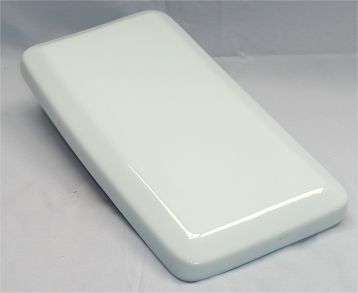
(Copyright: Eldad Carin)
Your cell phone
That thing you're pressing to your face? There's a 16
percent chance it has fecal matter on it, London researchers found. And even if
it's not brimming with E. coli, nine in 10 cell phones carry some kind of
disease-causing germ, like influenza or MRSA. Think about it: You take your
cell phone everywhere--public transit, the bathroom, the office--and you never
clean it.
YOUR FIX: Wipe it with an electronic-safe disinfectant wipe
like Wireless Wipes or CleanTouch once a week, said Charles Gerba, a professor of
microbiology at the University of Arizona. (Are you neglecting the unwritten
rules of hygiene? You might not even realize it, but here are the
Super-Gross
Things You Do Without Thinking About It.)
Your grill
You probably cleaned your toilet more recently than you cleaned your grill--and
that's not a wise choice, considering the latter comes in contact with your
food. The average grill has 1.7 million microbes per square inch, according to
a 2013 British study. That's more than twice as many bacteria as the average
john. It makes sense that your grill is nasty because food particles cling to
the grates and work surfaces.
YOUR FIX: To give it a deep clean, scrub the grates with
soap and a scouring pad, scrape out any charred bits from the bottom, clean out
the gook in the burners with a paperclip, and rub down the entire exterior with
an ammonia-based cleaner and a paper towel. (Steer clear of E.Coli and
salmonella by preventing the
5
Cookout Mistakes That Make You Sick.)
Your 'clean' laundry
Crap clings to your underwear, whether you can see it or not. When you throw
your undies in the laundry, you transfer about 500 million E. coli bacteria to
the machine, according to Gerba. On top of that, water tends to settle in the
bottom of front-loading machines, making it a breeding ground for germs. Then
you wash your clothes in that mess.
YOUR FIX: To make sure your clothes come out actually clean,
do a load of whites first so you can use chlorine bleach to sanitize the
machine. Dedicate a cycle to underwear and use hot water with a color-safe
bleach substitute. Also, run an empty cycle with bleach once every month to
keep your washer free of bacteria.
Your toothbrush
When you flush your toilet, it can spray aerosolized droplets over 20 feet,
said Philip Tierno Jr., director of microbiology and immunology at NYU's
Langone Medical Center and the author of “The Secret Life of Germs.” So if you
leave your toothbrush out on the bathroom sink, it could be showered with tiny
drops of whatever you just flushed.
YOUR FIX: Stowing your toothbrush in a cabinet away from the
flying feces might be a good idea. Running it through the dishwasher will also
eliminate germs, according to a 2011 study in the American Journal of
Dentistry. An even easier option: soak your toothbrush in a mouthwash that
contains cetylpyridinium chloride, like Scope, for 20 minutes. (Most guys trust
their brush is taking care of business, but the dirty truth is that it may be a
Trojan horse of bacteria and other microorganisms. Find out
How
Clean is Your Toothbrush and how to keep your mouth
healthy.)
Your kitchen sponge
Your sponge is probably the nastiest thing in your kitchen. It's damp and
constantly in contact with bacteria, making it a prime place for germs to
proliferate. There's a one in three chance your kitchen sponge has staph,
according to a Simmons College study. (That's twice the contamination rate of
your toilet.) And it could be harboring 10 million bacteria per square
inch--that's 200,000 times dirtier than your toilet, according to studies from
the University of Arizona.
YOUR FIX: To kill germs, nuke your wet sponge in the microwave
for 1 minute. It’s that simple
source: http://www.foxnews.com/health/2014/08/31/5-things-that-are-germier-than-toilet-seat/
http://www.thisoldtoilet.com

